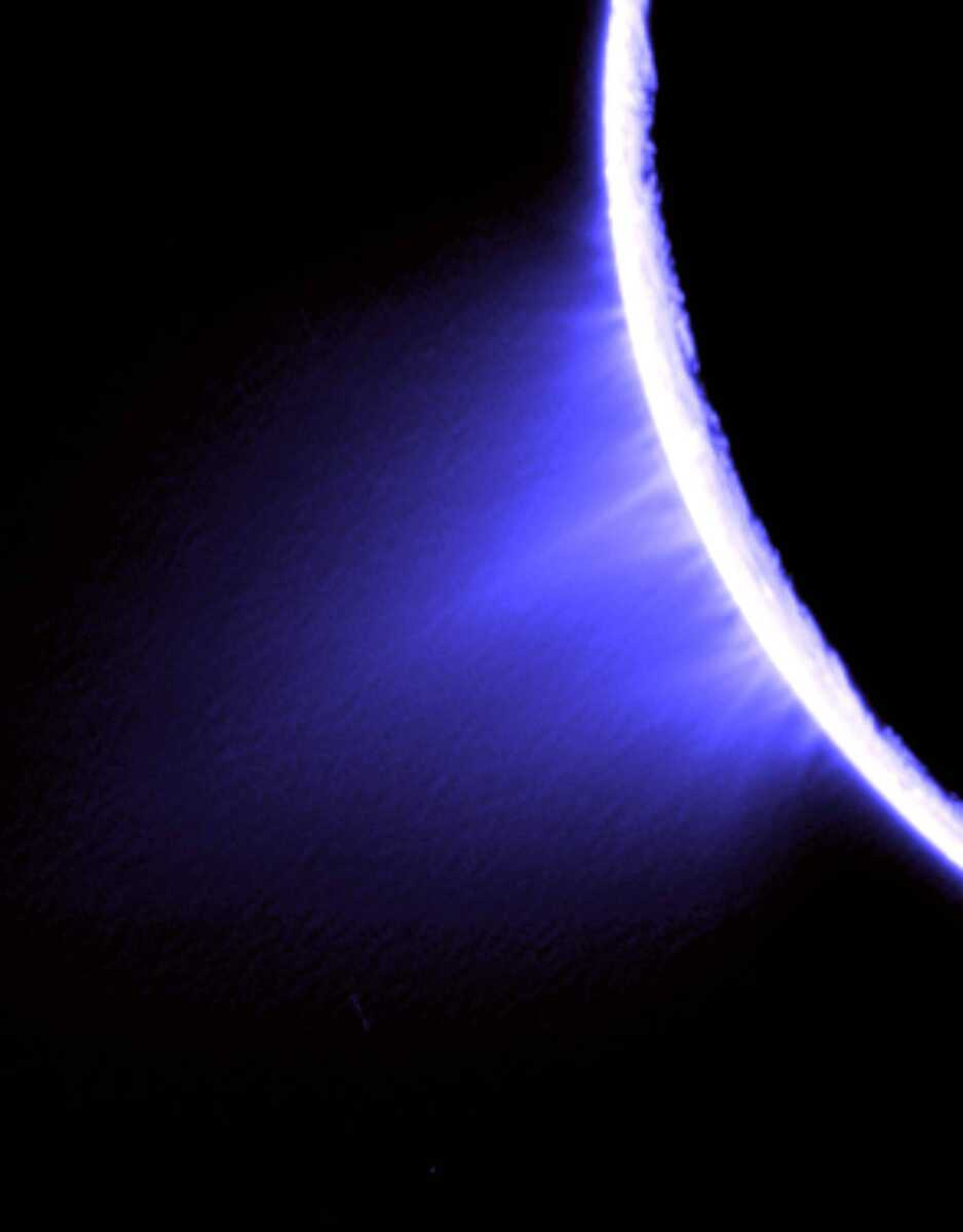Plumes on Saturn moon may contain water vapor
WASHINGTON -- Astronomers looking at the spectacular supersonic plumes of gas and dust shooting off one of Saturn's moons say there are strong hints of liquid water, a key building block of life. Their research, appearing in today's issue of the journal Nature, adds to the growing push to explore further the moon Enceladus, as one of the solar system's most compelling places for potential life...
WASHINGTON -- Astronomers looking at the spectacular supersonic plumes of gas and dust shooting off one of Saturn's moons say there are strong hints of liquid water, a key building block of life.
Their research, appearing in today's issue of the journal Nature, adds to the growing push to explore further the moon Enceladus, as one of the solar system's most compelling places for potential life.
Using images from NASA's Cassini probe, astronomers had already figured that the mysterious plumes shooting from Enceladus' icy terrain contain water vapor. New calculations suggesting the gas and dust spew at speeds faster-than-sound make the case for liquid, said study lead author Candice Hansen of NASA's Jet Propulsion Lab in California. Her team calculated the plumes travel more than 1,360 mph.
Reaching that speed "is hard to do without liquids," Hansen said. While her paper offers more evidence building on what others have found, she added that her research is not the final proof of liquid water on Enceladus (pronounced en-SELL-ah-dus).
Other planetary scientists, such as Andrew Ingersoll at the California Institute of Technology, said the research is good, but that it is possible to achieve such speeds with ice particles and at cooler temperatures. So Hansen hasn't proven her case yet, he and other scientists said.
Carolyn Porco, the head of the Cassini camera team and an astronomer who didn't take part in Hansen's research, said "the evidence in my mind is building on liquid water." That moon, one of 60 circling Saturn, "has become the go-to place" for exploration in the outer planets, she said.
Europa, a moon of Jupiter, may have a liquid ocean beneath its frozen surface. But Enceladus, thought responsible for producing one of Saturn's rings, is more accessible, Hansen said. "Enceladus is sort of helpfully spewing out its innards," she said.
Connect with the Southeast Missourian Newsroom:
For corrections to this story or other insights for the editor, click here. To submit a letter to the editor, click here. To learn about the Southeast Missourian’s AI Policy, click here.








